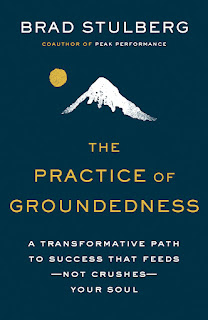A Review of Do Hard Things
For those that don't know, Steve Magness is a well known author, researcher, and performance coach. His newsletter, The Growth Equation, is worth subscribing to. In addition to coaching world class endurance athletes, Magness himself was an accomplished miler and although he may have been a bit quicker than me, I still feel some sense of connectedness to what he has to say about performance. I happened to listen to him recently on the Rich Roll podcast and in addition to talking about the Nike Oregon Project scandal of which he played a key role first as an assistant coach and then whistleblower, Magness also spoke at length about his latest book, Do Hard Things.
What follows is a reminder to myself, an encouragement, hopefully, to my kids to seek out the true source of confidence, and to people I work with to always be in touch with what they truly do control.
Magness tees up his thesis by going into a good amount of detail in debunking the traditional definitions of toughness. For example, in the military, he asserts that the extreme trials they go through is not an exercise in developing toughness, but more accurately an act of sorting or filtering out those not suited to the task ahead of them. Note that I did not say filtering out the weak. Magness also recounts the story of Bear Bryant and his Texas A&M players, the so-called Junction Boys, who went through 10 days of hell with Bryant as the task master. What in fact happened, was indeed a sorting exercise and those remained felt they had no other choice. One of those that opted out later went on to become a TOPGUN fighter pilot for the navy. So, clearly not weak.
Instead of the old toughness trope, Magness defines toughness as, "...experiencing discomfort or distress, leaning in, paying attention, and creating space to take thoughtful action. It is navigating discomfort to make the best decision you can."
He then goes on to explain the four pillars to cultivate such toughness:
- Pillar 1: Ditch the Facade, Embrace the Reality
- Pillar 2: Listen to Your Body
- Pillar 3: Respond instead of React
- Pillar 4: Transcend Discomfort
Pillar 1: Ditch the Facade, Embrace the Reality
Magness tells us that if we set our expectations too high, we're more likely to enter the "freakout stage" of the toughness pattern that he defines as Feel --> Inner Debate --> Decision (freak out or find a way through). He also tells us that goals need to come from within and to do that requires introspection - asking ourselves what matters to us and why. Magness states, "Tough people are self-aware and they get there by embracing reality and understanding who they are."
True Confidence is Quiet; Insecurity is Loud. Magness reminds us that doubts and insecurities are part of being human. To deal with that, we need to be confident. But what does that mean? It's not the fake self-esteem, "Believe in yourself and anything is possible" guff of the '90s that was largely extrinsically motivated. Rather, Magness summarizes it as, "Arrogance Sits on Insecurity; Confidence Sits on Experience." We create real inner confidence through four steps; 1) Lower the bar. Raise the floor, 2) Shed perfection. Embrace who you are, 3) Trust your training. Trust yourself, and 4) Develop a quiet ego.
The author's point about success always being defined in running as achieving a new PR isn't setting the athlete up for success. Rather, he talks about raising the floor. One example is knowing that no matter what, the athlete expects that when they step onto the track, they are likely to be fast than the average of their 5 most recent performances. That's raising the floor - by focusing on being consistent first.
He also notes that you don't raise the floor by having an unrealistic view of yourself. You do so by taking a hard look at where you are in the moment - what you are capable of, what challenges the task brings, and where your weaknesses might lie. He states, "When we are vulnerable, the words, phrases, and criticisms that might get under our skin lose their power if we've acknowledged and come to terms with them...We create fake confidence for the same reason we build fake self-esteem: to protect the sensitive parts of our ego and to hide our weaknesses and insecurities from the world for fear of being exposed as a fraud or as not good enough."
Trusting your training is an obvious one - to develop that feeling of, "I've been here before. I'm prepared for this challenge." And, a quiet ago is something the author describes as, "...coming to terms with the need for confidence...being open and receptive to others, instead of defensive and closed off."
So, what happens if we do all that and still fail? What happens is that the ones who are able to maintain a sense of control tend to be the ones that don't give up. For example, in the Gowans house, from an early age, the kids have been told countless times that they don't control the outcome of a match or game or race. What they do control is what Coach Steve Wilkinson in his book, Let Love Serve, described as The Three Crowns; 1) A full effort, 2) a positive attitude, and 3) good sportsmanship. So, in the car ride home, the conversations tend to center on the three crowns and not so much on the result. When we focus on the things we don't control, apathy takes over - what's the point of trying if I can't win? Magness offers ample evidence that our level of control changes how we respond to stress.


Comments
Post a Comment